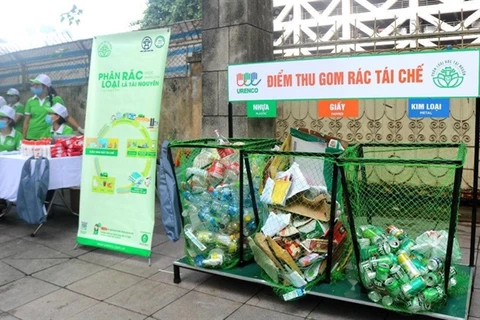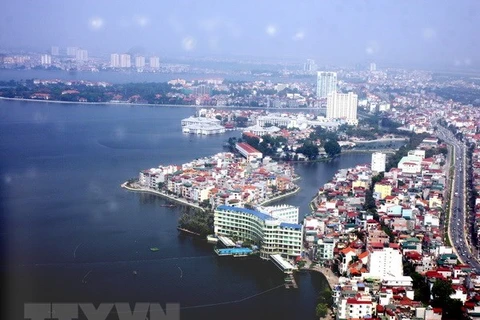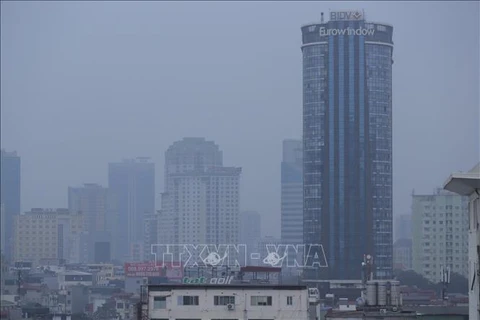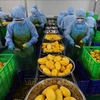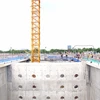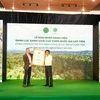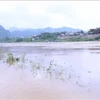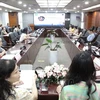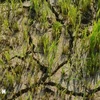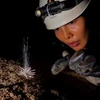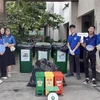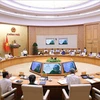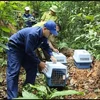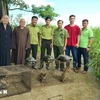 The Hanoi urban planning has outlined six key tasks, focusing on resolving the issue of river pollution. (Photo: VietnamPlus)
The Hanoi urban planning has outlined six key tasks, focusing on resolving the issue of river pollution. (Photo: VietnamPlus) Hanoi (VNA) - The Hanoi urban planning has outlined six key tasks, focusing on resolving the issue of river pollution to ensure safe irrigation water for agriculture.
The tasks are to resolve flooding in urban areas, ensuring safety during the rainy season for low-lying areas, and tackling the gridlock at city entrances and urban traffic congestion during peak hours.
At a meeting on February 23, Minister of Planning and Investment Nguyen Chi Dung presided over the appraisal session of the capital’s urban planning for 2021-2030, with a vision to 2050.
As heard at the event, the planning covers a wide scope of research, with the goal of becoming a cultural capital city, civilized and modern. Hanoi aims to become a convergence of the nation's essence while also serving as a major economic and financial centre of the country with regional influence.
 At the appraisal session of the Hanoi urban planning for 2021-2030, with a vision to 2050, held in the capital city on February 23. (Photo: VietnamPlus)
At the appraisal session of the Hanoi urban planning for 2021-2030, with a vision to 2050, held in the capital city on February 23. (Photo: VietnamPlus) The planning also identifies five pillars for Hanoi's development, namely culture and heritage, green development and circular economy, infrastructure, and modern transportation. It also aims to become a digital society, with smart urban areas, and a digital economy of science, technology, and innovation.
To this end, the city has set forth four strategic breakthroughs of establishing superior governance mechanisms, developing urban railways, high-quality human resources and developing urban space, improving the environment and landscape.
Accordingly, the capital city will become a centre of big data, with its social activities and management operated on digital platforms.
In his remarks at the meeting, Dung stressed that Hanoi also serves as a significant driving force for the development of the Red River Delta and the country.
He pointed out that despite its advantages, the city still faces some difficulties, challenges, and bottlenecks that need to be promptly addressed.
First, Hanoi's economic position is gradually decreasing compared to other provinces and cities in the Red River Delta. The capital grew 6.27% in 2023, ranking 9th out of 11 localities in the region. The economic structure shift of the city is slow, with the key high-efficiency economic sectors yet to clearly take shape.
Second, Hanoi still faces a series of shortcomings in technical and social infrastructure development.
Third, the connection between Hanoi and other Red River Delta provinces has yet to be synchronised and developed to the right level.
Fourth, the city’s population has exceeded the anticipated level, rendering it infeasible to relocate people from the center and putting significant pressure on local infrastructure and living standards.
Fifth, its terrain divided by river systems and weak geological foundations are posing challenges to the construction of underground projects.
Therefore, the minister recommended the capital city clearly identify its unique potential, distinctive strengths, and outstanding features.
Its urban planning needs to adopt a new approach, expand vision, and provide a clear implementation roadmap, he said. Its urban development must have focal points and rely on regional connectivity to create a ripple effect that drives economic growth commensurate with its position regionally and nationally./.
| Hanoi has 104 irrigation lakes, 105 rivers and canals with total length of more than 799km, according to the municipal Department of Natural Resources and Environment. However, water sources are in danger of depletion and pollution. |

